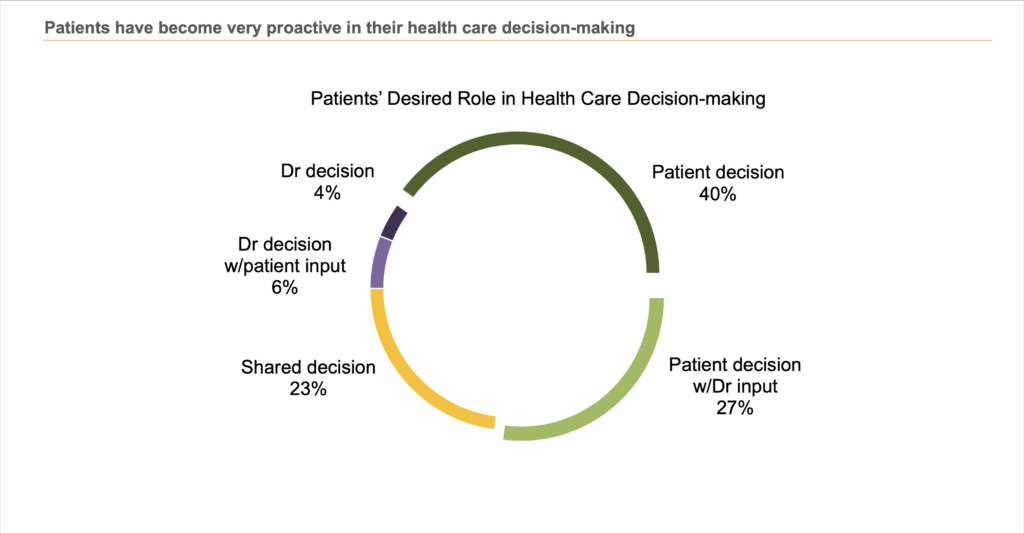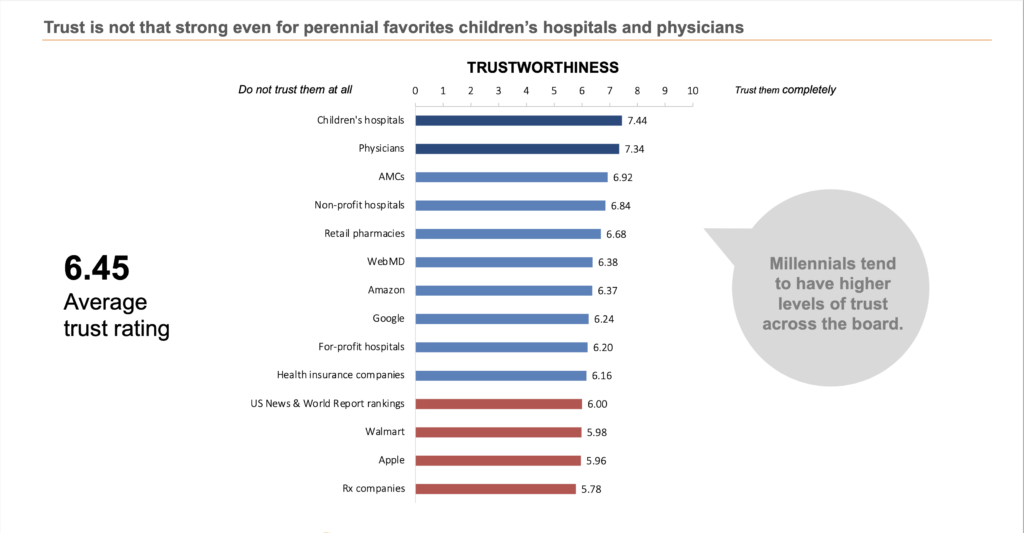Leading health systems are investing in branding campaigns and strategies in record numbers to reengage populations and create new dimensions of loyalty and engagement. But after the steep decline of trust and loyalty during the pandemic, is a shiny new brand campaign enough?
I keep reading in the healthcare trade press stories of health systems launching new branding campaigns. Melanie Blackman, strategy editor at HealthLeaders, has written extensively of late about brands like Sanford Health, Henry Ford Health, and Northside Hospital launching new healthcare branding initiatives. We’re seeing the same uptick in branding engagements at Hailey Sault: renaming, rebranding, repositioning, and even reimagining the role of brand in social media are just a few of the projects that our team has been devoted to in recent months.
Which makes me wonder: is healthcare branding making a comeback?
Then again, I’m reminded of what hiphop icon LL Cool J once proclaimed: “Don’t call it a comeback. I’ve been here for years.”
During the height of the pandemic, we wrote that “Engagement Is the New Healthcare Branding.” Based on our analysis of what consumers wanted from hospitals and physicians, consumers were leaning into content and communications that helped them navigate their fears and concerns about COVID. At the same time, healthcare organizations were tasked with bringing people back into the hospital and clinic for care. Slick and overly-produced brand campaigns felt tone-deaf at a time when the sense of urgency was to provide clear and open lines of communication with patients who craved news and information they could trust to navigate their health and wellness.
Engaging patients in real time was the very best way to communicate the brand: by embodying the brand values that health systems desire to be known for. That’s still true today, but there’s been a shift in our industry and among our peers and contemporaries: the realization that the pandemic made brittle the trust relationship between patients and their providers.

Klein & Partners’ 2022 National Consumer Omnibus Study
At HMPS22, Rob Klein of Klein & Partners shared excerpts from his “Omnibus” study, tracking sentiment among healthcare consumers across the country. Rob shared that trust has declined for all healthcare organizations, including perennial “favorites” like children’s hospitals and physicians. According to Klein, when a brand slips below an 8 out of 10 in the trust index score, the brand is in trouble. No healthcare organization type scored higher than 7.44.
So is the influx of healthcare branding campaigns an indication that healthcare is in deep doo-doo?
Maybe so. After all, seasoned communicators know that if the target audience is leaning back, you communicate in ways to invite the audience to lean back in.
But there’s more to the branding comeback story and why health systems are investing in brand message and brand storytelling.
While consumers have lowered their overall trust in healthcare brands as a whole, those same consumers are making more of the decision of where they seek care than ever before.
 Klein & Partners’ 2022 National Consumer Omnibus Study
Klein & Partners’ 2022 National Consumer Omnibus Study
In the same presentation, Klein presented data that suggests consumers are making more of their healthcare decision-making independent of physicians.
According to the study, 40% of patients are choosing healthcare solutions by themselves: without counsel of their physicians.
If you’ve been in healthcare marketing for longer than 30 minutes, that statistic should shock you.
Physicians have always been recognized as the gatekeepers to healthcare encounters. Yet according to the data, more and more consumers are navigating their healthcare journeys without physicians guiding them. The implication being: if 40% of consumers are making healthcare decisions on their own, then healthcare organizations have a rare opportunity to engage with consumers and influence their decision-making like never before. Cue up the branding campaigns.
But that still doesn’t explain fully the increase in health system branding campaigns.
The complete answer to the rising popularity of healthcare branding campaigns may have less to do with consumer audiences and more to do with a different kind of highly valuable audience: talented healthcare workers.
The Great Resignation hit healthcare as hard as any industry. Headlines like “1 in 5 Health Care Workers Have Quit Their Jobs During the Pandemic” have created a new crisis on the heels of the pandemic. As healthcare executives scramble to recruit and retain great talent, the role of the health system’s brand has taken on a whole new meaning and value proposition.
That’s why we have written that “Healthcare Marketers Should Return to Purpose to Achieve Strategic Goals.” Physicians, nurses, frontline staff and other healthcare employees are understandably burned out. The seismic changes that have disrupted our industry can’t be overstated. In a time of uncertainty, health systems have the opportunity—and the obligation—to communicate and reinforce their purpose, mission and values to employees as well as consumers. These are “stabilizing” virtues. After all, a sense of purpose is an essential driver of satisfaction and meaning in a human’s life—not to mention a leading attribute of resilience.
As Hilary McClafferty, MD, FAAP writes:
Research shows that a strong sense of ‘locus of control,’ i.e., an inner ‘can-do’ perspective, is a recognized trait of highly resilient people. (1) It is not that these resilient people don’t recognize the obstacle, it is that they do several things simultaneously including recognizing challenges, maintaining an attitude of realistic optimism and problem solving without fear of failure.
There are many challenges facing healthcare that marketers cannot solve on their own. But what we can do as marketing communications professionals is to share messages that resonate with audiences so that those audiences can make informed decisions: such as where to go for care or where to invest their livelihoods and careers.
Branding campaigns are no panacea, but great branding and authentic messaging—using the universal impact of artful storytelling—are tools to encourage audiences to lean in, and to act.
The ultimate power of great branding is the chance to touch hearts. Because when we make heart-based connections, we have the opportunity to invite action. Whether that action is to schedule a physician appointment, finally address a health concern, contact an employer for a job, or to simply be reminded of our own mission and purpose—and to lean in to the hard, but vital work necessary to help those in need.



